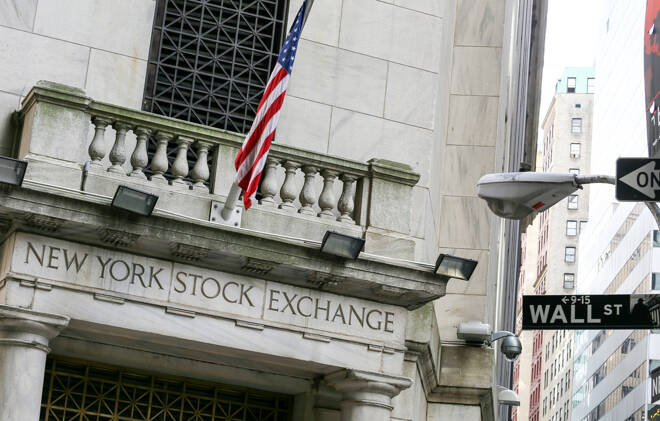Advertisement
Advertisement
BHP Posts 4% Decline in Annual Profit Amid COVID-19 Slowdown; Warns Slow Growth Recovery Outside China
By:
BHP Group, an Anglo-Australian multinational mining, metals and petroleum dual-listed public company, reported a decline in annual profit of nearly 4% to $9.06 billion in the second quarter and said except China, all other major economies will contract this year as a result of the COVID-19 pandemic.
BHP Group, an Anglo-Australian multinational mining, metals and petroleum dual-listed public company, reported a decline in annual profit of nearly 4% to $9.06 billion in the second quarter and said except China, all other major economies will contract this year as a result of the COVID-19 pandemic.
The largest diversified natural resource company reported an attributable profit of $8.0 billion and underlying attributable profit of $9.1 billion broadly in line with the prior year. The company posted a profit from operations of $14.4 billion and underlying EBITDA of $22.1 billion at a margin of 53%, with unit costs reduced by 9%.
BHP Group also declared a final dividend of 55 cents per share, down from 78 cents a year earlier, or US$2.8 billion, which includes an additional amount of 17 US cents per share (equivalent to US$0.9 billion) above the 50% minimum payout policy. Total dividends announced US$1.20 per share, equivalent to a 67% payout ratio.
BHP Group expects that China and the OECD will return to their pre-COVID-19 trend growth rates from around 2023. Developing economies outside East Asia may take longer. Inflation trends and exchange rates have been volatile.
Executive comments
“We expect most major economies will contract heavily in 2020, China being the exception. Recovery will vary considerably by country. Our diversified portfolio and high-quality assets position us to continue to generate returns in the face of near-term uncertainty, even as we secure and create the options in future-facing commodities that will allow us to sustainably grow value in the long-term,” Chief Executive Mike Henry said in a statement.
“BHP’s operations generated robust free cash flow and our balance sheet remained strong, with net debt finishing the year at the low end of our target range. We have announced a final dividend of 55 US cents per share, bringing shareholder returns to US$6.1 billion for the full year,” Henry added.
BHP Group stock forecast
Eleven analysts forecast the average price in 12 months at GBX 1,820 with a high forecast of GBX 2,130 and a low forecast of GBX 1,450. The average price target represents a -1.15% decrease from the last price of GBX 1,841.20. From those 11, seven analysts rated “Buy”, four rated “Hold” and none rated “Sell”, according to Tipranks.
Morgan Stanley target price is GBX 1,680 with a high of GBX 2,450 under a bull scenario and GBX 720 under the worst-case scenario. BHP Group had its price objective lowered by analysts at Royal Bank of Canada to GBX 1,900 from GBX 1,950. The firm currently has an “outperform” rating on the stock.
Other equity analysts also recently updated their stock outlook. UBS Group upped their price objective to GBX 1,850 from GBX 1,700 and gave the company a “buy” rating. Goldman Sachs Group upped their price target to GBX 1,850 from GBX 1,780 and gave the company a “buy” rating. Bank of America raised shares of BHP Group to a “buy” rating and set a GBX 2,050 target price.
Analyst view
“BHP’s portfolio mix and quality stand out among peers. The low-cost position of its assets enables the company to generate FCF yield even in a stress scenario. It maintains a strong B/S, giving the flexibility to pursue growth and/or increase cash shareholder returns, in particular given the company’s net debt target of $12-17 billion (post-IFRS16 adjustment) vs 1HFY20 levels of $12.5 billion,” said Alain Gabriel, equity analyst at Morgan Stanley.
“Spot FCF yields are comparable to peers, even without contributions from the Petroleum division, thus implying long-term optionality to a potential oil price recovery. We prefer BHP on a relative basis, given its attractive commodity mix ex-Iron Ore and free optionality on a potential oil price recovery,” Gabriel added.
Upside and Downside risks
Upside: 1) Growth projects (Jansen potash, Escondida growth, Spence hypogene, Olympic Dam) successfully executed. 2) Better operating performance, lower costs and capital expenditure. 3) Higher commodity prices – highlighted by Morgan Stanley.
Downside: 1) Execution issues at growth projects (Jansen potash, Escondida growth, Spence hypogene, Olympic Dam). 2) Weak operating performance, higher costs and capital expenditure. 3) Lower commodity prices.
About the Author
Vivek Kumarauthor
Vivek completed his education from the University of Mumbai in Economics and possesses stronghold in writing on stocks, commodities, foreign exchange, and bonds.
Advertisement
